The impacts of PPE on the environment by University of Worcester student Liz Bradley (BSc Forensic and Applied Biology, Year 3)
Personal Protective Equipment (PPE) is used to help limit the spread of infectious diseases to others and the wearer.
It is widely used throughout healthcare sectors which come into contact with blood and other bodily fluids. Studies suggest that if each person in the UK wore a single-use face mask every day for 1 year, over 66,000 tonnes of unrecyclable plastic waste would be generated (Dean, 2020).
Another study has suggested that a single box of nitrile gloves (approximately 100 gloves per box) has the same amount of CO2 associated with it as driving 20 miles in a petrol car (Fang et al, 2021). With the coronavirus pandemic, PPE has been main source of protection against infection.
Between February and July 2020, the same amount of PPE was distributed in the UK as in the whole of 2019.
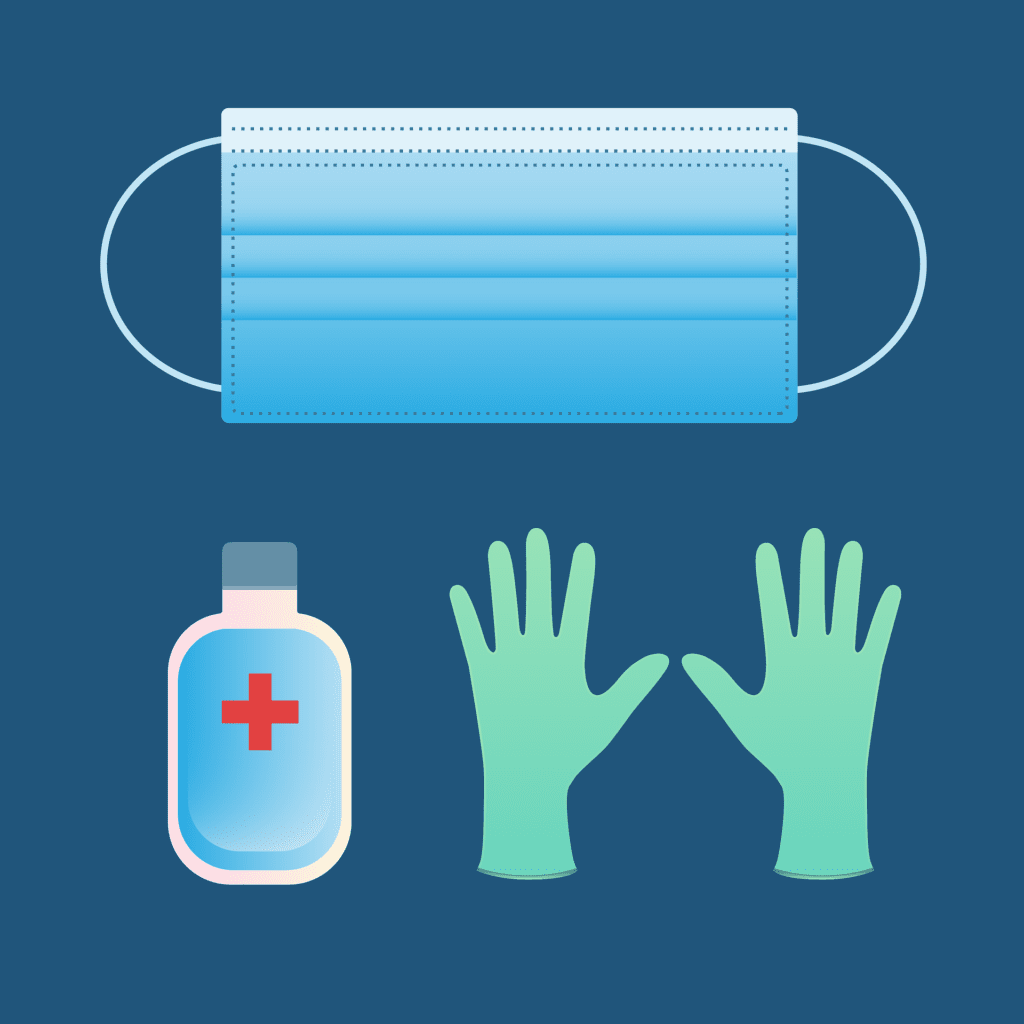
Zhang et al (2021) write that between February and July 2020, the same amount of PPE was distributed in the UK as in the whole of 2019. Globally, it is estimated 129 billion face masks and 65 billion gloves have been used every month during the COVID-19 pandemic.
Furthermore, during the first 6 months of the pandemic, the carbon footprint from using PPE was equivalent to flying from London to New York 244 times everyday (Rizan, Reed & Bhutta, 2021).
Based on these worrying figures, I conducted a small survey to learn more about opinions of professionals who work with PPE on a daily basis, including before the pandemic. Professionals who participated in the survey included dental workers, veterinarians, and care workers. These results, which can be seen below, helped in forming an understanding of the opinions around how PPE is used and disposed of by professionals, and if reusable and biodegradable PPE would be considered over disposable. It is clear that with the amount of PPE that professionals go through daily, a solution is needed to reduce the amount of PPE which ends up in landfill and our ecosystems.
If biodegradable PPE options were just as accessible and cost-effective, then places of work would consider purchasing PPE which is better for the environment.
Most responses showed that price is a big factor when purchasing PPE, as the cheapest option is usually chosen due to budgets and the quantity which is needed. This shows, that if biodegradable options were just as accessible with similar, if not cheaper prices than disposable, then places of work would consider purchasing PPE which is better for the environment and biodegrades quicker than disposable PPE.
The majority of individuals who participated in the survey cared about the animals and the overall ecosystem. But with little information out there which highlights the problems disposable PPE causes, a lot of people are not informed about how it is affecting our environment.
To change this, more information should be provided to companies which highlights the environmental impacts of using disposable PPE. Many members of the general public have taken to using reusable face masks when out doing errands and going into work, as these reduce the need for disposable PPE and only requires regular washing. Some face masks have slots available to place filters in, which offers more protection.
Surgical face masks have been found in our oceans, on land, and tangled around animals after incorrect disposal.
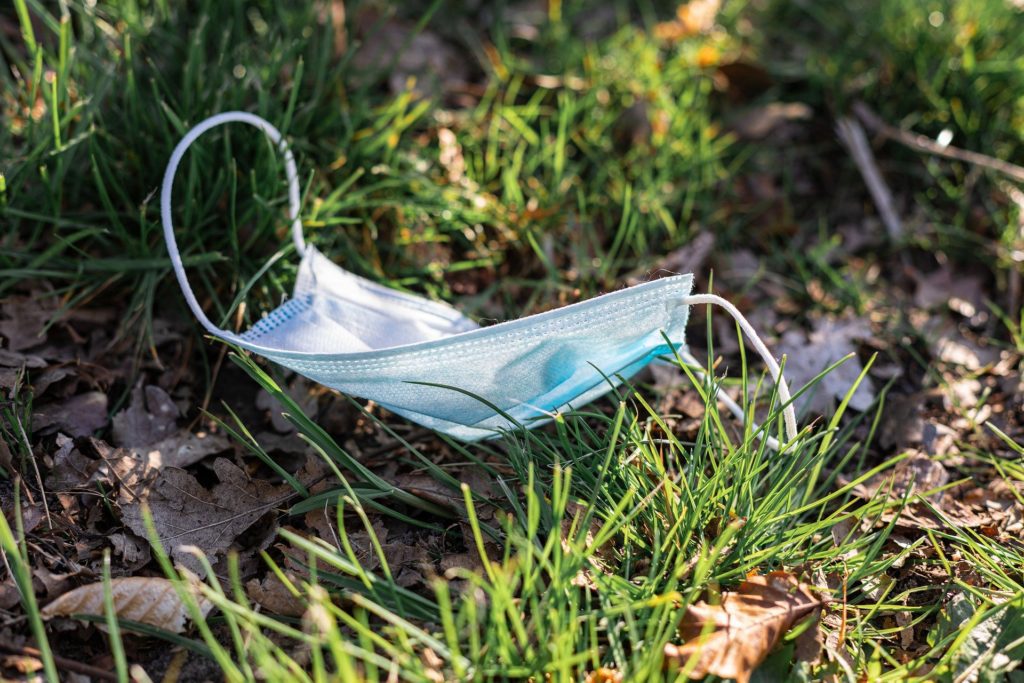
Surgical face masks have built in filters, but only last for a specific amount of time, until they are deemed useless and need replacing, resulting in more disposable PPE being used. These surgical face masks have been found in our oceans, land and tangled around animals after incorrect disposable. As a result, it is adding to the harm of the ecosystems and wildlife (Hester, 2020).
One solution which has been created to correctly dispose of PPE, is the Zero Waste Box which is based in the USA. These boxes will be placed in public places to enable the public to correctly dispose of their used face masks (TerraCycle, 2021). This should dramatically reduce the amount of PPE which is incorrectly disposed of, and if bins are regularly placed around in public places, people are more likely to use them.
Other research from the University of Nebraska is trying to determine if ultraviolet light can decontaminate masks and respirators (Kolata, 2020). This technique will enable PPE to be reusable rather than single use, and ultimately less PPE should end up in landfill.
Although there is still a way to go to ensure PPE is reused and recycled, the first initial steps have been taken to try and fix the problem of damaging the ecosystem and help our environment. More awareness is needed to ensure correct disposal of PPE and to try and use reusable PPE when possible.
See below to read the results of a small survey conducted to learn more about professionals’ opinions of PPE use within their workplace.
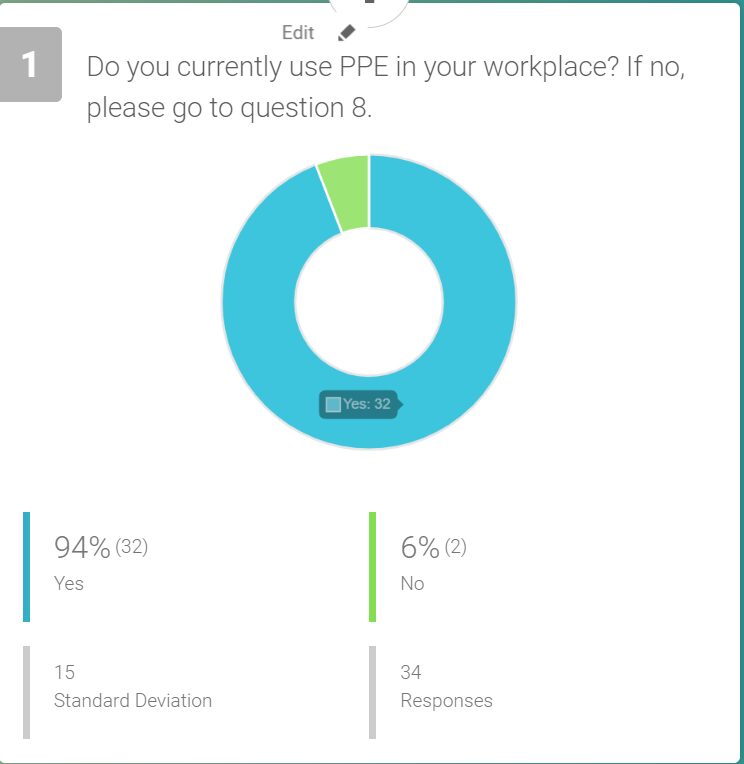
Q1.) Do you currently use PPE in your workplace? If no, please go to Q8.
Q2.) If yes, please estimate how frequently you change your PPE in an average shift/ day.

Q3.) On a typical shift, what PPE do you wear? Tick all that apply.
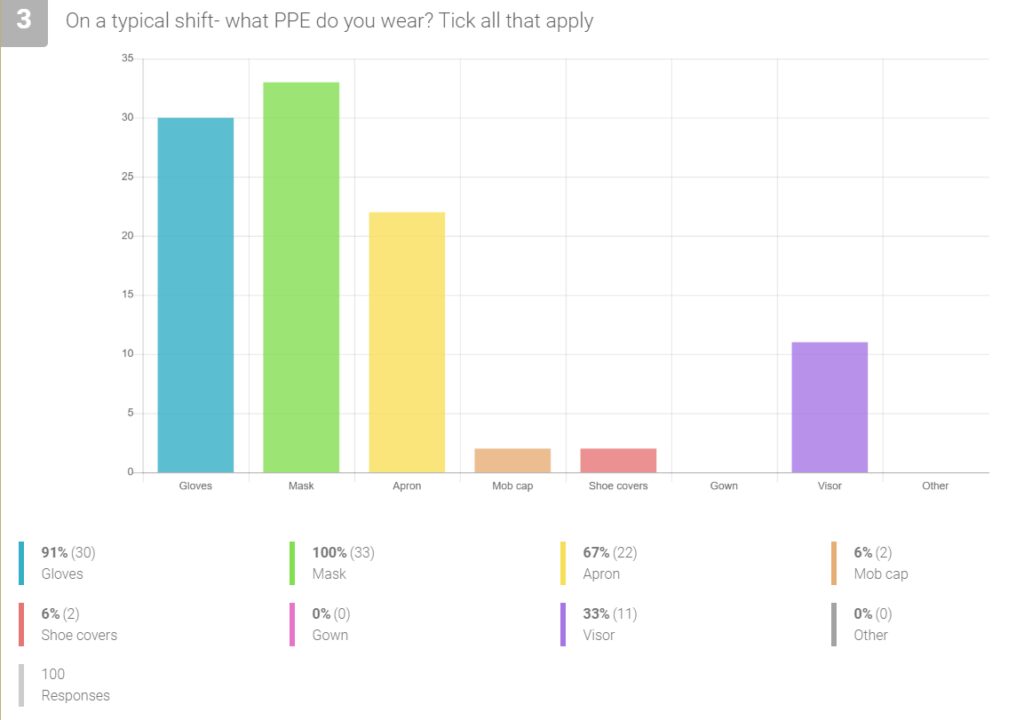

Q4.) Do you have any input into the decision making of what PPE is worn in the workplace? If no, please go to Q7.
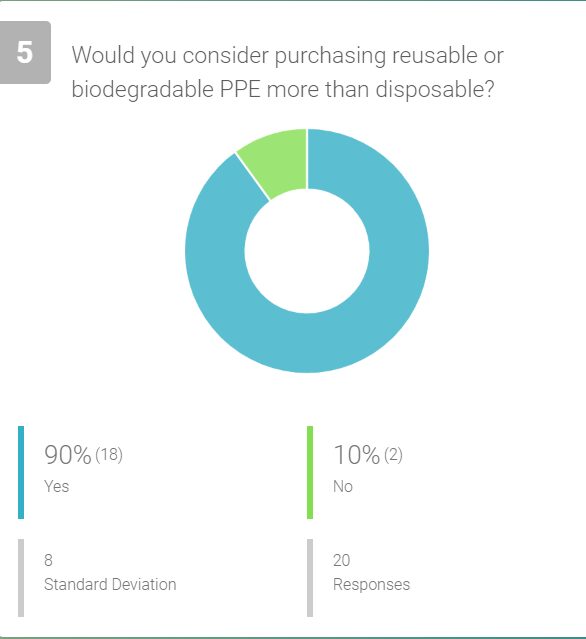
Q5.) Would you consider purchasing reusable or biodegradable PPE over disposable PPE?
Q6.) On one website selling PPE, biodegradable gloves cost £17.94 for a pack of 100. Disposable nitrile gloves cost £13.95 for a pack of 100. Would you consider buying the biodegradable over disposable? If so, why?
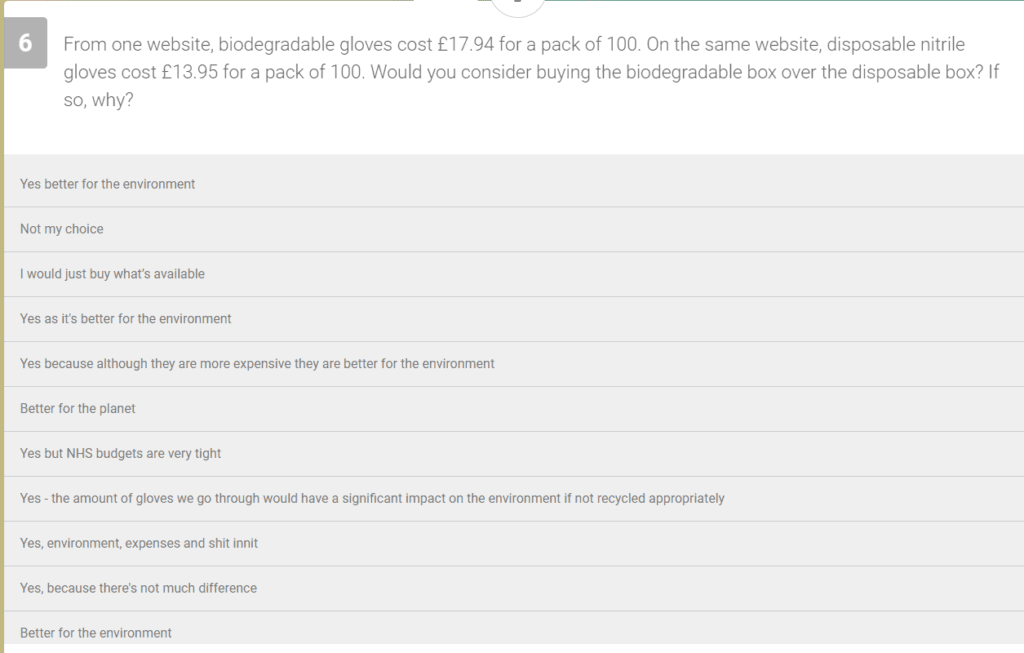
Q7.) How important is it that your PPE is not having a negative impact on biodiversity?
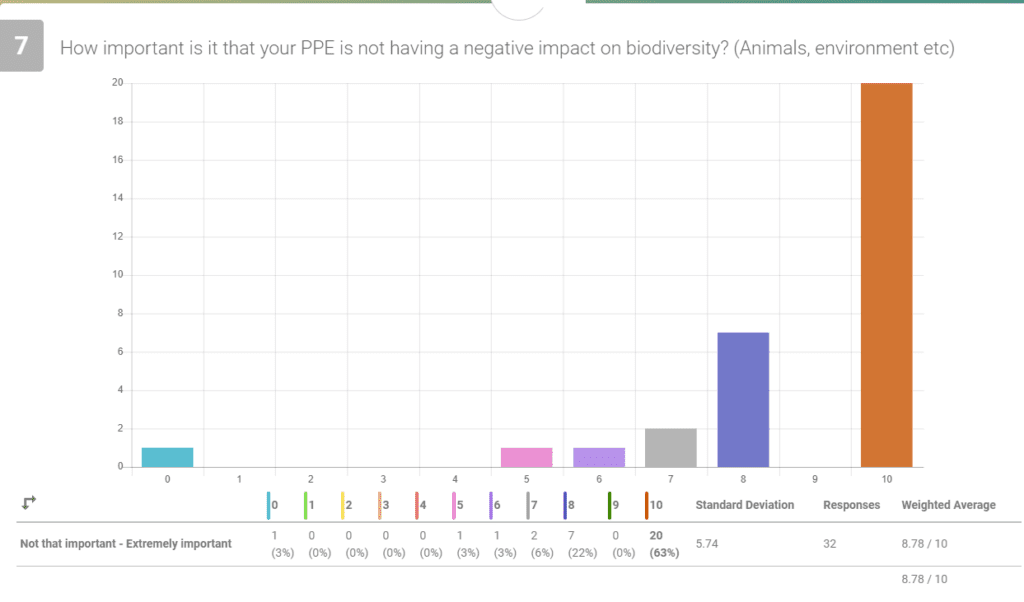
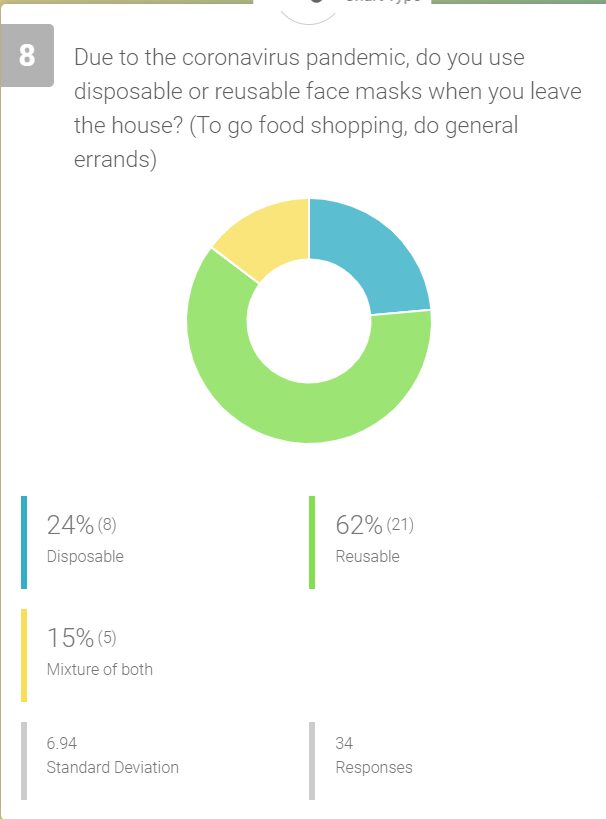
Q8.) Due to the coronavirus pandemic, do you use disposable or reusable face masks when you leave the house?

Q9.) When the pandemic has ended, will you continue to wear a face mask when you are suffering with illness and need to leave the house?

Q.10) Has this survey made you think more about the effects PPE has on the environment?
Image credits: Pixabay
References
Dean (2020) ‘PPE: Polluting Planet Earth’ British Dental Journal, 229(267), pp. 267.
Fang, Pinder, Cooper, McGrath & Shelton (2021) ‘Mitigating the environment impact of plastic PPE: more than just disposal’ BMJ, 372, pp. 1.
Hester (2020) ‘For Wildlife, Disposable PPE is Far From Protective’ Available from: https://www.atlasobscura.com/articles/ppe-in-environment (Accessed on: 15/03/21).
Rizan, Reed & Bhutta (2021) ‘Environmental impact of personal protective equipment distributed for use by health and social care services in England in the first six months of the COVID-19 pandemic’ Journal of the Royal Society of Medicine, 0(0), pp. 1-14.
TerraCycle (2021) ‘About Zero Waste Box’ Available from: https://zerowasteboxes.terracycle.co.uk/pages/about-zero-waste-box (Accessed on: 02/04/21).
Zhang, Aitchison, Phillips, Shaban & Kam (2021) ‘Protecting the environment from plastic PPE’ BMJ, 372, pp. 1-2
Kolata (2020) ‘As Coronavirus Looms, Mask Shortage Gives Rise to Promising Approach’ Available from: https://www.nytimes.com/2020/03/20/health/coronavirus-masks-reuse.html (Accessed on: 02/04/21).